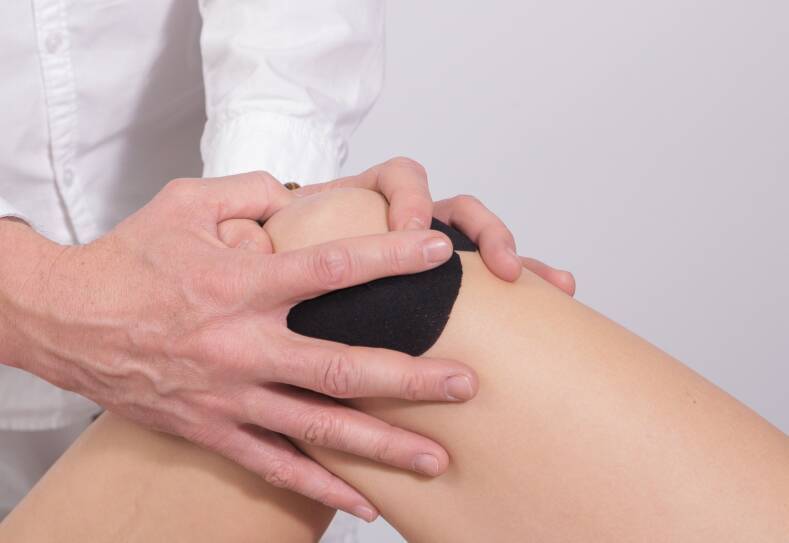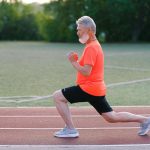Recovery from knee replacement surgery involves a series of physical therapy and exercises to regain strength, mobility, and balance. Balance exercises, in particular, play a crucial role in post-operative rehabilitation. They help individuals regain stability and confidence in their movements, which is essential for performing daily activities safely and effectively. Enhanced balance can also reduce the risk of falls, which is particularly important given the increased vulnerability during the recovery period after knee replacement surgery.
Incorporating balance exercises into the rehabilitation routine is recommended to reinforce the muscles around the new joint and to improve proprioception – the body’s ability to perceive its position in space. These exercises typically begin with basic movements and gradually increase in complexity as the individual’s strength and balance improve. Common balance exercises after a knee replacement might include standing on one leg, using balance aids, and shifting weight from side to side, all of which aid in the development of knee stability and overall coordination.
It is important for patients to follow a tailored exercise regimen developed by healthcare professionals to ensure optimal recovery. By engaging regularly in prescribed balance exercises, individuals who have undergone a knee replacement can work toward a successful return to daily activities and an active lifestyle, free from the pain and limitations they experienced prior to surgery.
Understanding Knee Replacement
Total knee replacement, often referred to as knee arthroplasty, is a surgical procedure commonly performed to relieve pain and restore function in severely diseased knee joints, typically resulting from osteoarthritis. Candidates for knee replacement usually have a significant reduction in mobility, persistent pain, and impaired quality of life despite conservative treatments.
The surgery involves removing damaged cartilage and bone from the knee joint and replacing it with an artificial joint, made of metal alloys, high-grade plastics, and polymers. A successful knee replacement surgery can lead to a dramatic improvement in a patient’s ability to perform common activities such as walking and climbing stairs.
Risks and Complications of Knee Replacement:
- Infection
- Blood clots
- Implant loosening or malalignment
- Wear of the prosthetic components
- Persistent pain
- Stiffness
Recovery post-surgery includes a rehabilitation program that focuses on improving knee strength and mobility. Balance exercises are a crucial aspect of postoperative rehabilitation, aiming to improve stability and prevent falls.
Patients are encouraged to engage in exercise routines to:
- Enhance muscular strength around the knee
- Improve range of motion (ROM)
- Restore balance to a functional level
Although knee replacement can significantly improve quality of life, it is noteworthy that prosthetic knees may not fully replicate the function of a healthy knee. Patients should hold realistic expectations about postoperative outcomes and adhere to their prescribed physical therapy regimen.
Pre-Surgery Exercise Considerations
Prior to undergoing knee replacement surgery, engaging in targeted exercises can significantly enhance one’s strength and facilitate a smoother post-surgery recovery.
Importance of Pre-Surgery Strength
Strengthening exercises prior to surgery are integral as they contribute to better outcomes. Strengthening the quadriceps muscles, in particular, is vital because these are the main supporting muscles of the knee. Enhanced quadriceps strength provides better support for the new joint, reduces the risk of post-operative complications, and may also shorten the recovery time. It’s also crucial that these exercises are done correctly to prevent additional strain on the knee.
Recommended Pre-Surgery Exercises
Physical therapists often suggest specific exercises to improve muscle strength and knee function before surgery. These exercises include:
- Quadriceps Sets:
- Tighten the quadriceps muscle of the affected leg by pressing the back of the knee down into the surface. Hold for 5 seconds and release. Repeat 10 times.
- Straight Leg Raises:
- Lie down with one leg bent and the other one straight. Lift the straight leg up approximately 6 inches off the ground, hold for 5 seconds, and slowly lower it. Perform 10 repetitions.
- Ankle Pumps:
- Flex the foot up and down to improve blood flow in the leg muscles, helping to reduce swelling and improve mobility. Do this for a few minutes several times a day.
In conclusion, these exercises should be practiced consistently but without pushing beyond discomfort to prevent exacerbation of any pre-existing pain. Always consult a healthcare provider before beginning any new exercise regimen.
Post-Surgery Recovery Timeline
Immediate Post-Op (0-1 week): Patients typically begin their recovery in the hospital, where pain is managed and mobility starts as soon as possible under the guidance of a physical therapist. Emphasis is on activating the muscles around the knee and starting to regain range of motion.
| Time | Focus |
|---|---|
| Days 1-2 | Pain management, initial mobilization |
| Days 3-7 | Increase range of motion, basic walking |
Short-Term Recovery (2-6 weeks): Pain and swelling decrease during this stage as patients work on walking and range of motion. They often transition from assistive devices to independent walking.
- Weeks 2-3:
- Patients may walk with minimal support.
- Gentle strengthening exercises are introduced.
- Weeks 4-6:
- Progressive walking and mobility exercises.
- Emphasis on consistent exercise and increasing activity levels.
Mid-Term Recovery (7-12 weeks): With the goal of regaining normal function, the physical therapist may introduce more dynamic exercises to challenge the knee’s stability and mobility.
- Activities:
- Squatting movements: To improve leg strength.
- Balance training: To restore joint stability.
Long-Term Recovery (3-6 months): Focus transitions to regaining full range of motion and returning to daily activities. Patients may continue therapeutic exercises and incorporate them into fitness routines.
- Guidance:
- Consistent exercise is crucial.
- Maintenance programs are recommended to keep the knee strong.
By adhering to the recovery timeline and working closely with their physical therapist, patients can make steady progress towards regaining mobility and a pain-free range of motion after their knee surgery.
Essential Balance Exercises
After a knee replacement, focusing on balance exercises is crucial for regaining stability and confidence in daily movements. These exercises not only improve balance but also contribute to the overall success of the knee rehabilitation process.
Starting with Basic Movements
One should begin their balance training with foundational exercises that promote stability and joint control. Ankle pumps and knee bends are simple yet effective starting points. A patient can perform ankle pumps by sitting or lying down, and then pushing the foot up and down to stimulate circulation and movement in the leg. For knee bends, standing with support and gently bending the knee without weight-bearing can increase flexibility and muscle activation.
- Straight Leg Raises: While lying on one’s back, they should tighten their thigh muscle and lift the leg several inches off the ground, holding the position briefly before lowering back down. These movements serve as a valuable precursor to more advanced balance activities.
Advancing to Dynamic Balance Exercises
Once basic movement proficiency is achieved, individuals can progress to more dynamic balance exercises that mimic everyday activities.
- Single-Leg Balance: Patients can improve their stability by standing on one leg, initially with support, and then without, possibly moving the other leg in different directions to challenge balance further.
- Squats: Utilizing a chair for support, one can practice standing and sitting motions to build strength, graduating to performing squats without support as their balance improves.
- Stepping Exercises: Stepping over objects or up and down stairs are ways to further challenge balance and coordination, ensuring the exercise program transitions into more conventional activities.
By integrating these balance exercises into their routine, individuals can foster greater stability and mobility after a knee replacement.
Strengthening Exercises for Stability
After knee replacement, stability is paramount for safe movement. Focusing on strengthening exercises that enhance muscle strength, particularly in the quadriceps, is essential. Integrating resistance training can further reinforce stability and improve overall knee function.
Focus on Quadriceps Muscles
The quadriceps muscles are key stabilizers for the knee joint. To strengthen these muscles:
- Quadriceps Sets: The patient should lie on their back with their legs straight. They then contract the quadriceps by pushing the back of the knee down into the surface. Each contraction should be held for five seconds, repeating for 10 to 15 repetitions.
- Straight Leg Raises: While still lying down, the patient raises their leg with the knee kept straight, holding the position briefly before lowering the leg back down. This exercise strengthens the quadriceps without putting pressure on the knee.
Incorporating Resistance Training
Adding resistance exercises can further improve quadriceps muscle strength.
- Leg Presses: Utilizing a leg press machine allows the patient to safely add resistance to leg extensions, building quadriceps strength.
- Elastic Band Exercises: Resistance bands can be used for side lying leg lifts or seated knee extensions to provide added resistance during the movement, promoting increased strength in the quadriceps muscles.
Improving Flexibility and Range of Motion
After a knee replacement, enhancing flexibility and expanding range of motion are crucial for a successful recovery. This involves specific exercises and stretches designed to gently increase the bending capacity of the knee while managing knee pain effectively.
Safe Stretching Techniques
One begins with bed-supported knee bends. A person should lie flat with their heel on the bed, slowly bending the knee upward as comfort allows. They should hold the position for a few seconds, then gently straighten the leg back to its starting position.
Standing knee bends are another effective stretch. The individual stands holding onto a stable surface for support, gently bends the operated knee, bringing the heel up towards the buttocks, and then returns to the initial position. This can be done several times, ensuring no overextension causes pain.
Knee Mobility Routines
For knee movement, structured routines are important. These can include:
- Sitting knee extensions: While seated, one extends the operated leg to straighten the knee fully and then slowly lowers it back down.
- Heel slides: Sliding the heel towards the buttocks while lying down promotes knee flexion; it’s critical to slide back to the starting point at a controlled pace.
Each routine should be repeated several times a day, holding each position for 5-10 seconds to maximize the benefit. Emphasis is placed on the smooth and controlled execution of movement to avoid straining the knee.
Integrating Aerobic and Endurance Workouts
After a knee replacement, patients need to carefully reintegrate aerobic exercise and build overall endurance in a way that supports joint health and recovery.
Low-Impact Aerobic Activities
Low-impact aerobic activities are crucial for maintaining cardiovascular health without placing undue stress on a healing knee. These activities include:
- Cycling: Cycling on a stationary bike helps improve knee mobility and strength.
- Elliptical training: Provides a smooth motion that mimics walking or running without the impact.
- Swimming: The buoyancy of water supports body weight, allowing for joint-friendly resistance training.
- Dancing: Gentle dance moves can boost heart rate and flexibility while keeping the knee safe.
Building Endurance for Daily Activities
Building endurance is not just about extending the duration of exercise; it’s about enhancing the capacity to perform daily activities with ease. This includes:
- Incremental walking: Start with short distances and gradually increase the time and intensity.
- Functional exercises: Integrate movements that replicate day-to-day activities, such as standing up from a seated position or climbing stairs, to build strength and endurance.
Patients should tailor their exercises to align with individual recovery progress and consult with their physical therapist or healthcare provider before starting any new exercise regimen.
Safety Measures and Recognizing Complications
After knee replacement surgery, patient safety is paramount. It is important for patients to listen closely to the advice provided by their orthopedic surgeon and physical therapist.
Precautionary Steps:
- Consult Healthcare Professionals: Always consult with a doctor or physical therapist before starting balance exercises. They can recommend appropriate activities tailored to individual recovery stages.
- Progress Gradually: Begin with simple exercises to build strength without overstraining the new joint.
- Use Support: Utilize handrails or stable furniture when performing exercises to prevent falls.
Monitoring for Complications: Complications, though rare, can occur. Recognizing these early is crucial for effective management.
- Discomfort: Some discomfort is normal, but increasing pain should prompt a consultation with a doctor.
- Blood Clots: Watch for signs of blood clots such as swelling, pain, and redness in the calf. These require immediate medical attention.
- Circulation and Stiffness: Report any changes in circulation or unusual stiffness to a healthcare provider.
- Infection Signs: Persistent fever or chills, redness, or discharge around the incision site should be reported to the surgeon.
Symptom Checklist:
- Fever above 100°F
- Shaking chills
- Increased redness or swelling
- Pain in calf or leg unrelated to the incision
- Sudden shortness of breath
Patients should be clear on how to contact their healthcare team if they suspect any complications. Through adherence to safety measures and awareness of potential complications, patients can navigate their postoperative period with confidence.
Transitioning Back to Daily Activities
After a total knee replacement, patients are encouraged to resume daily activities gradually to strengthen the knee and improve overall function. A balanced approach ensures safety while working towards regaining independence and enhancing quality of life.
Using Assistive Devices
Walking is a critical part of rehabilitation, and patients might initially need assistive devices for safe mobility. Walkers and canes provide stability for those in the early stages of recovery. It’s essential they use these devices as recommended by their healthcare provider to support knee health and prevent falls. As their strength and confidence increase, patients can often transition to using less supportive devices until they are walking independently.
- Walkers: Provide comprehensive support; patients should gradually put more weight on the recovering knee.
- Canes: Used when a patient can support more weight on the knee, aiding balance rather than full support.
- Crutches: An option for those who require less support than a walker but more than a cane.
Navigating Stairs and Uneven Surfaces
Stairs present a significant challenge after knee replacement surgery. Patients should approach stairs with caution, using railings or assistive devices as needed. The general rule they follow is “up with the good, down with the bad,” meaning the non-operated leg should lead when going up, and the operated leg should lead when descending. Patients may initially need physical assistance or support from a person, in addition to a handrail or device.
Uneven surfaces require attention to prevent strain on the knee or falls. They should start by practicing on even surfaces and gradually introduce more challenging terrain as their confidence and knee function improve. During this progression, patients continue to use assistive devices until they are comfortable and steady on their feet.
| Surface Type | Suggestions for Safe Navigation |
|---|---|
| Stairs | Use railing, go slowly, lead with the correct leg |
| Uneven Terrain | Begin with even ground, increase complexity over time |








